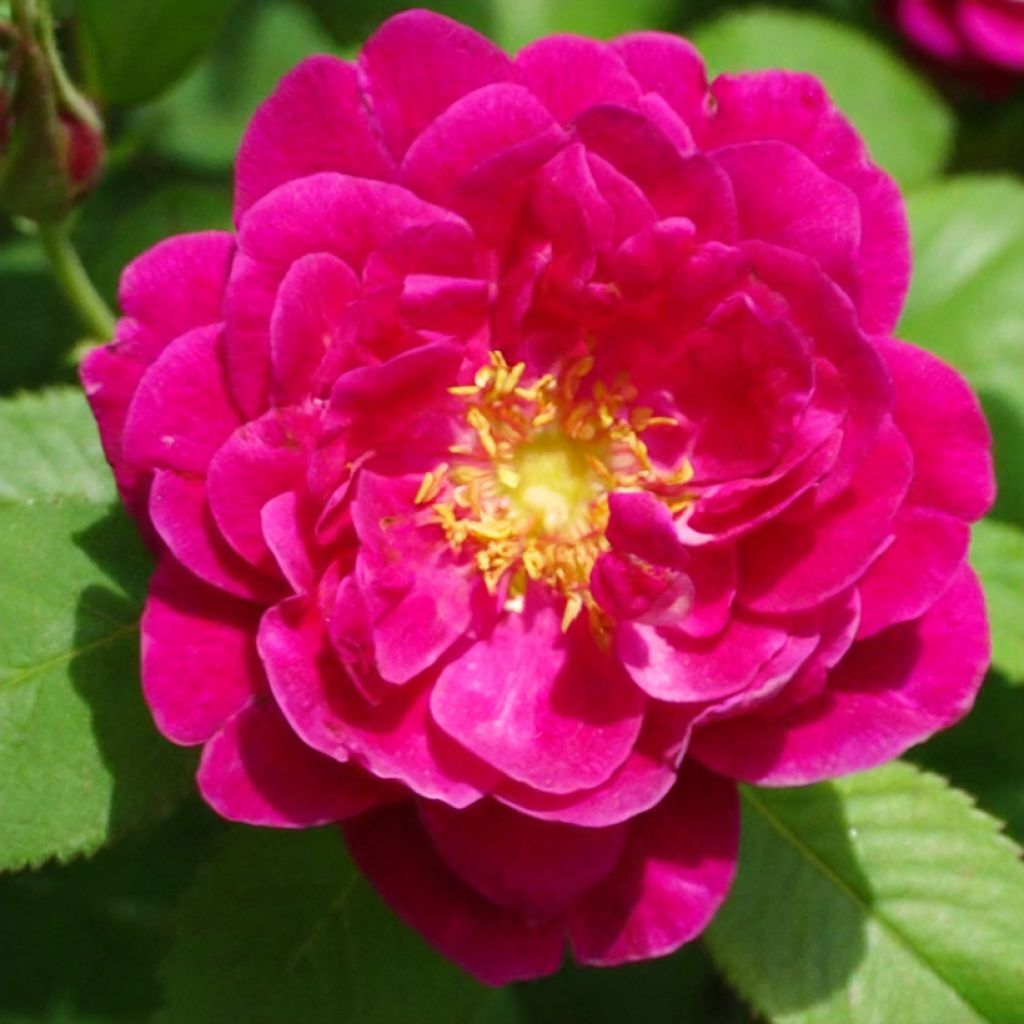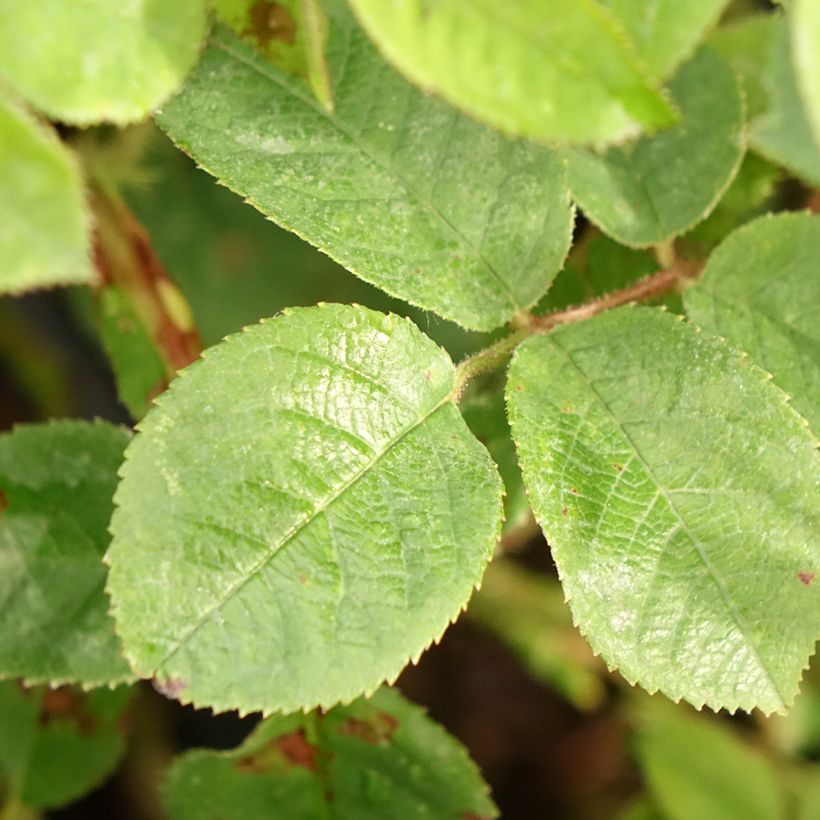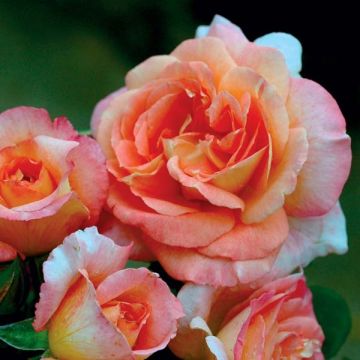

'Henri Martin' (Red Moss) Old Rose
'Henri Martin' (Red Moss) Old Rose
Rosa centifolia muscosa Henri Martin 'Red Moss'
Moss Rose, Musk Rose
Received a bare root plant, very well packaged and in good freshness. Planted immediately just over a week ago and young shoots are now appearing on all branches. Can't wait to experience its fragrance!
PATRICIA, le 18 mars 2024, 18/03/2024
Special offer!
Receive a €20 voucher for any order over €90 (excluding delivery costs, credit notes, and plastic-free options)!
1- Add your favorite plants to your cart.
2- Once you have reached €90, confirm your order (you can even choose the delivery date!).
3- As soon as your order is shipped, you will receive an email containing your voucher code, valid for 3 months (90 days).
Your voucher is unique and can only be used once, for any order with a minimum value of €20, excluding delivery costs.
Can be combined with other current offers, non-divisible and non-refundable.
Home or relay delivery (depending on size and destination)
Schedule delivery date,
and select date in basket
This plant carries a 6 months recovery warranty
More information
We guarantee the quality of our plants for a full growing cycle, and will replace at our expense any plant that fails to recover under normal climatic and planting conditions.

Description
The 'Henri Martin' or 'Red Moss' Rose Bush is an exceptional moss rose due to its red flowering, a very unusual colour in this rose category. The bush, with vigorous habit, well leafy, with strong and willingly arched branches, always blooms generously in early summer. Its barely double silk flowers, open flat, are a bright crimson red turning to a vivid purple-pink. Their fragrance is superb, further enhanced by the balsamic scent of delicate green moss that covers the buds. Before fading, they offer bees a lovely bouquet of golden stamens. Easy to grow even in partial shade and in poor soil.
This 'Henri Martin' rose, bred by Jean Laffay in 1863, was introduced to the market by Portemer in 1865. It carries the genes of the Rosa centifolia 'Muscosa', the origin of many hybrids obtained by cross-breeding with Damask roses and hybrids of China rose. There are still 150 varieties grouped under the name "moss roses."
'Henri Martin' grows as a slightly loose bush with an upright but flexible habit. It has rapid growth and reaches an average height of 1.70 m with a spread of 1.20 m, more in optimal conditions. When grown on its own roots, the bush suckers. Its long, robust, slightly arched stems are covered in reddish prickle. The abundant flowering takes place from June to July. The 6 cm roses have three rows of flat, rounded petals that quickly recurve. Their colour is crimson red to carmine when opening; then, they turn to a dark pink before fading into a more purplish tone. A beautiful bouquet of stamens sits at the centre of the Corolla. The slightly mossy flower buds are delicate and grouped in small clusters. Their fragrance is moderately pronounced, but the balsamic scent of the moss enhances it. After pollination by insects, small decorative fruits called hips form. They ripen and turn orange in autumn. The light green foliage proves resistant to diseases if the plant benefits from an airy location. It partially persists in winter, depending on the climate. The moss, slightly sticky like resin, is also light green.
The passion for old roses is well justified, as they are generally more robust than modern roses and very reliable, although they are not always repeat-flowering. The 'Henri Martin' Rose Bush is vigorous and generous, ideal in the back of a border or a flowering hedge. It can be associated with large white roses (Rosa x alba Suaveolens) or pink roses (Rosa x damascena). Also, consider Cotinus and deciduous euonymus for autumn colours, lilacs for their spring fragrance, and mock oranges for the same reason. Hibiscus will take over in the summer. Finally, it is a hardy and accommodating bush that grows easily in all regions.
Report an error about the product description
'Henri Martin' (Red Moss) Old Rose in pictures


Plant habit
Flowering
Foliage
Botanical data
Rosa
centifolia muscosa
Henri Martin 'Red Moss'
Rosaceae
Moss Rose, Musk Rose
Cultivar or hybrid
Planting and care
The 'Henri Martin' rose thrives in all regions and is unafraid of cold or rain. It adapts to all soil types, even pretty poor ones, as long as they are deep. Plant it in ordinary, well-worked and well-drained soil in a sunny or semi-shaded position, which it tolerates very well. This rose is very hardy and can withstand temperatures as low as 20 °C.
To plant your rose in a pot or the open ground, prepare the soil to a depth of 25 cm. You can do this by crumbling the soil and mixing it with a planting substrate such as blood, fish and bone. Then, position your plant by removing it from its pot and covering the top of the root ball with 3 cm of soil. Fill in the remaining space and water generously to eliminate air pockets. In dry weather, water regularly for a few weeks to facilitate root growth.
Provide your rose with special rose fertiliser to stimulate plant flowering. To achieve abundant flowering, regularly bend and tie the branches. Each bend will result in a lateral shoot that ends in a flower bouquet.
Note that this variety sometimes needs support due to its very flexible branches that bend under the weight of the flowers.
Roses often develop unsightly stains at the end of summer, but these are natural and harmless to the plant's growth.
Planting period
Intended location
Care
-
, onOrder confirmed
Reply from on Promesse de fleurs
Similar products
Haven't found what you were looking for?
Hardiness is the lowest winter temperature a plant can endure without suffering serious damage or even dying. However, hardiness is affected by location (a sheltered area, such as a patio), protection (winter cover) and soil type (hardiness is improved by well-drained soil).

Photo Sharing Terms & Conditions
In order to encourage gardeners to interact and share their experiences, Promesse de fleurs offers various media enabling content to be uploaded onto its Site - in particular via the ‘Photo sharing’ module.
The User agrees to refrain from:
- Posting any content that is illegal, prejudicial, insulting, racist, inciteful to hatred, revisionist, contrary to public decency, that infringes on privacy or on the privacy rights of third parties, in particular the publicity rights of persons and goods, intellectual property rights, or the right to privacy.
- Submitting content on behalf of a third party;
- Impersonate the identity of a third party and/or publish any personal information about a third party;
In general, the User undertakes to refrain from any unethical behaviour.
All Content (in particular text, comments, files, images, photos, videos, creative works, etc.), which may be subject to property or intellectual property rights, image or other private rights, shall remain the property of the User, subject to the limited rights granted by the terms of the licence granted by Promesse de fleurs as stated below. Users are at liberty to publish or not to publish such Content on the Site, notably via the ‘Photo Sharing’ facility, and accept that this Content shall be made public and freely accessible, notably on the Internet.
Users further acknowledge, undertake to have ,and guarantee that they hold all necessary rights and permissions to publish such material on the Site, in particular with regard to the legislation in force pertaining to any privacy, property, intellectual property, image, or contractual rights, or rights of any other nature. By publishing such Content on the Site, Users acknowledge accepting full liability as publishers of the Content within the meaning of the law, and grant Promesse de fleurs, free of charge, an inclusive, worldwide licence for the said Content for the entire duration of its publication, including all reproduction, representation, up/downloading, displaying, performing, transmission, and storage rights.
Users also grant permission for their name to be linked to the Content and accept that this link may not always be made available.
By engaging in posting material, Users consent to their Content becoming automatically accessible on the Internet, in particular on other sites and/or blogs and/or web pages of the Promesse de fleurs site, including in particular social pages and the Promesse de fleurs catalogue.
Users may secure the removal of entrusted content free of charge by issuing a simple request via our contact form.
The flowering period indicated on our website applies to countries and regions located in USDA zone 8 (France, the United Kingdom, Ireland, the Netherlands, etc.)
It will vary according to where you live:
- In zones 9 to 10 (Italy, Spain, Greece, etc.), flowering will occur about 2 to 4 weeks earlier.
- In zones 6 to 7 (Germany, Poland, Slovenia, and lower mountainous regions), flowering will be delayed by 2 to 3 weeks.
- In zone 5 (Central Europe, Scandinavia), blooming will be delayed by 3 to 5 weeks.
In temperate climates, pruning of spring-flowering shrubs (forsythia, spireas, etc.) should be done just after flowering.
Pruning of summer-flowering shrubs (Indian Lilac, Perovskia, etc.) can be done in winter or spring.
In cold regions as well as with frost-sensitive plants, avoid pruning too early when severe frosts may still occur.
The planting period indicated on our website applies to countries and regions located in USDA zone 8 (France, United Kingdom, Ireland, Netherlands).
It will vary according to where you live:
- In Mediterranean zones (Marseille, Madrid, Milan, etc.), autumn and winter are the best planting periods.
- In continental zones (Strasbourg, Munich, Vienna, etc.), delay planting by 2 to 3 weeks in spring and bring it forward by 2 to 4 weeks in autumn.
- In mountainous regions (the Alps, Pyrenees, Carpathians, etc.), it is best to plant in late spring (May-June) or late summer (August-September).
The harvesting period indicated on our website applies to countries and regions in USDA zone 8 (France, England, Ireland, the Netherlands).
In colder areas (Scandinavia, Poland, Austria...) fruit and vegetable harvests are likely to be delayed by 3-4 weeks.
In warmer areas (Italy, Spain, Greece, etc.), harvesting will probably take place earlier, depending on weather conditions.
The sowing periods indicated on our website apply to countries and regions within USDA Zone 8 (France, UK, Ireland, Netherlands).
In colder areas (Scandinavia, Poland, Austria...), delay any outdoor sowing by 3-4 weeks, or sow under glass.
In warmer climes (Italy, Spain, Greece, etc.), bring outdoor sowing forward by a few weeks.

































